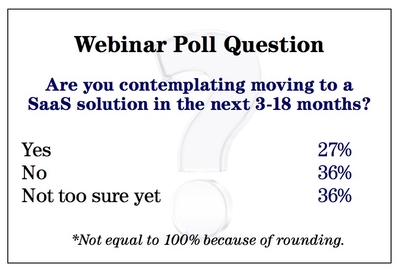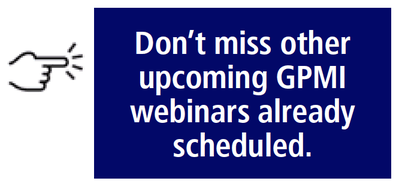
Cloud technology for human resource information systems (HRIS) provides great benefits and flexibility, but any organization considering a move to the cloud must focus diligently on change management and know the difference between configuration and customization.
In the Global Payroll Management Institute’s (GPMI) webinar “SaaS in the Trenches: Real World Pros and Cons,” HRIS experts Jeanne Kalinowski and Joe Almodóvar shared lessons learned from their combined experience in systems implementation and explained how to determine whether software-as-a-service (SaaS) is right for your company.
Almodóvar, Senior Director of Global HRIS, Finance, Payroll, & Knowledge Systems at AT Kearney, explained that SaaS has a long track record and that what today is referred to as “the cloud” was once known as time sharing or an application service provider.
“You’re basically leasing technology,” he said. “You don’t own it. The infrastructure is supported by someone else, and you’re leveraging that technology. Cloud implementations are quicker, cheaper to run, new functionality is much more frequent, and you don’t have to wait long periods between upgrades.”
He and Kalinowski, HRIS Consultant with HRIS Assist, Inc., walked their audience through the steps of due diligence, contract review, project plans, vendor selection, system selection, staffing, security, configuration, implementation timing, staffing, release frequency, and vendor support.
“You are marrying this client,” Kalinowski said in explaining the importance of extensive investigation. “You are heavily connected with this vendor. You are dependent on them to help you access the information and move it around.”
Among their advice are these questions to ask in a request for proposal:
- What is the release schedule?
- How many releases can you fall behind before you are out of support?
- Can you import and export files yourself?
- Can the vendor accept multiple, separate inbound files?
- Are there blackout periods for support?
- What are the service level agreements?
- How many user defined fields can you have and where can they be located?
Almodóvar stressed the difference between configuration—in which the vendor configures the system to meet your business needs using existing systems, and customizing—in which the vendor adapts the system to your business requirements through newly developed code.
“One constant you will see from our presentation and experiences is the need for change management,” he said. “You will have to adapt your business processes to the application. Another key thread is understanding configuration versus customization. As many of us have experienced, configuration alone will not address all of your business processes.”
Kalinowski warned against being dazzled by a solution’s bright, shiny features or a vendor presentation that includes fancy functions your company will never need to use.
“You really need to have a conversation with your selection team before you go into the demos and tell them to take notes on functionality, not how it looks,” Kalinowski said. “How it looks is a consideration, but you can’t pick something that’s not going to actually work.”

Nicole Smith, GPMI’s Director of Instructional Design and Learning Development, hosted the webinar, which is
available on demand.